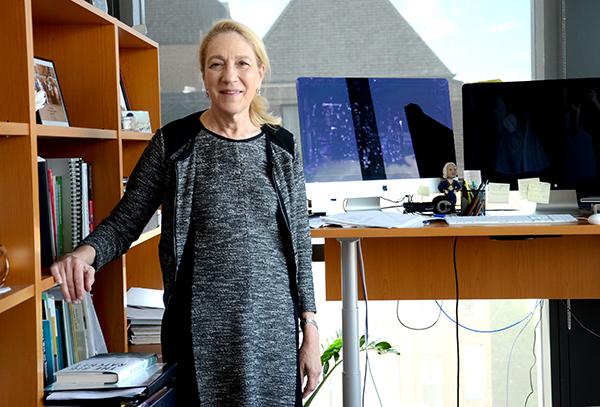The Milken Institute School of Public Health is 96 percent of the way to meeting the $150 million fundraising goal GW set for the school as part of its comprehensive campaign, but Dean Lynn Goldman isn’t slowing down.
After landing the University’s largest-ever gift last spring, Goldman has become one of the most successful school fundraisers in GW’s history.
And while she’s already exceeded the expectations officials set for her when she arrived four years ago, she’s still pushing for more donations to support student scholarships over the next four years, as well as about $20 million to cover a quarter of the construction costs for the school’s newly opened building on Washington Circle.
The school’s $80 million donation, from billionaire philanthropists Michael Milken and Sumner Redstone, has boosted GW’s reputation as a top-tier research institution worthy of a major gift, Goldman said.
“That I think is energizing because I think there are potential donors out there who tend to think of GW in a certain way in terms of what kind of gift they think about giving,” Goldman said. “That we’ve been able to generate gifts of that magnitude, I’m hoping will give all donors a sense that our value has risen.”
Working with the University’s development office, she’s hoping to bring in naming donations for nearly every room in the building. The school’s former dean, Richard Southby, and his wife donated $500,000 last spring to name a conference room by the dean’s office.
She hopes to name one room the Alumni Room, and bring in donations from 100 alumni to fund it. The school is also looking to collect donations for a naming wall – a plaque that recognizes donors for how much they’ve given – in the school’s lobby. Goldman has said the school’s alumni giving rate has increased, thought she has declined in the past to provide specific numbers.
While Goldman remains responsible for bringing in donations for the public health school, Vice President for Development and Alumni Relations Michael Morsberger said his office is also looking to her to help raise money for other schools to meet University-wide goals.
Deans are required to spend at least 40 percent of their time fundraising, though many say they spend closer to half their time traveling to meet with alumni and potential donors. Now that Goldman has nearly completed her first round of fundraising, she can help lure potential donors to other areas in the University.
Morsberger said deans are fundraising for the University, rather than their own schools, when they meet with potential donors who have interests across varied fields.
“I think there’s a good understanding among the deans that we are University citizens first and foremost and to the extent we can cross-pollinate or get existing donors and alumni, parents, friends and grateful patients, that’s a good thing,” Morsberger said.
The University aims to raise $1 billion by 2018, looking to attract donations for research institutes and endowed professorships, as well as financial aid, student programs and construction.
Morsberger and others in his office determine potential donors’ interests before matching them with deans and other administrators. Deans also work with their respective advisory councils – volunteer groups that support deans and some program directors – to devise fundraising plans.
When Goldman travels to London this year for a Milken Institute conference, she plans to meet with a group of potential donors, though she said they could be more interested in GW’s new Corcoran School of the Arts and Design.
Michael Worth, a professor for nonprofit management who used to work in GW’s development office, said Goldman can serve as an ambassador for the University – someone who’s able to talk broadly about GW’s goals. A dean must be able to direct a donor to colleagues in other schools based on the donor’s interests, he said.
“Deans are primarily knowledgeable about their own schools, but if they’re traveling or if they’re interested in other parts of the University, they know about how to talk with those donors,” Worth said.
Goldman also plans to attend a public health conference in Louisiana this winter, where she’ll meet with a group of alumni who have not heard directly from her since the school was renamed the Milken Institute School of Public Health in March.
Goldman arrived after a decade as a professor at Johns Hopkins University. In the last four years, she’s elevated the school’s research portfolio, launched a revenue-generating online master’s degree program and significantly grown the number of faculty.
John Sandberg, an associate professor of public health, said Goldman’s ability to raise the school’s academic and research portfolio while also bringing in major donations can jolt more fundraising success.
“She’s enhancing the scientific and practice aspects of the school at the same time, and she’s managing to do both at the same time,” Sandberg said.
Goldman also orchestrated the move into the school’s new building, which brought its seven departments under one roof for the first time.
Peter Shin, an associate professor of public health, said Goldman has tried to raise money for the building by showing how the environment promotes collaboration among students and faculty.
“I think when you go along to the various offices, you’ll see there’s a lot of intermingling and interaction between the various departments,” he said. “I know everyone is sort of focused on the new building, but I think the way she talks about it is investing in our academic home.”







